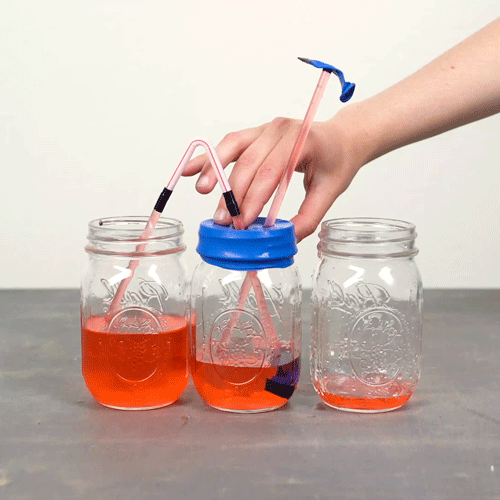Step-by-step tutorial
Learn more
If you’ve ever squeezed your hand together to shoot pool water, you’re familiar with the basics of how your heart works. It’s a muscle that squeezes together to pump blood around your body! But shooting pool water with your hand is pretty messy and splashy. Your heart has to be a lot more orderly. In fact, because of how your body uses blood, your heart needs to pump blood in just one direction. Blood carries oxygen on it, and all the parts of your body need oxygen to work right. If the blood pumped backward, your body would get blood that had no oxygen in it!In order to keep your blood flowing in the right direction, your heart has two pretty cool design features: chambers and valves. The chambers fill with blood, then squeeze tight to pump it out. Each side of your heart has an entry chamber called an atrium and an exit chamber called a ventricle (so your heart has four chambers total!). The entry and exit chambers pump one after the other to push your blood forward.Each chamber also has an exit door called a valve. These keep blood from getting pumped backwards. When the ventricle contracts, the atrium’s exit valve closes so blood won’t push back into it. When the ventricle relaxes, its own exit valve closes to keep blood from spilling backwards into it. That way, the pumping of each chamber moves your blood forward! To see more about how the chambers and valves work, follow the steps to build this model.
Step 1
Gather your materials!
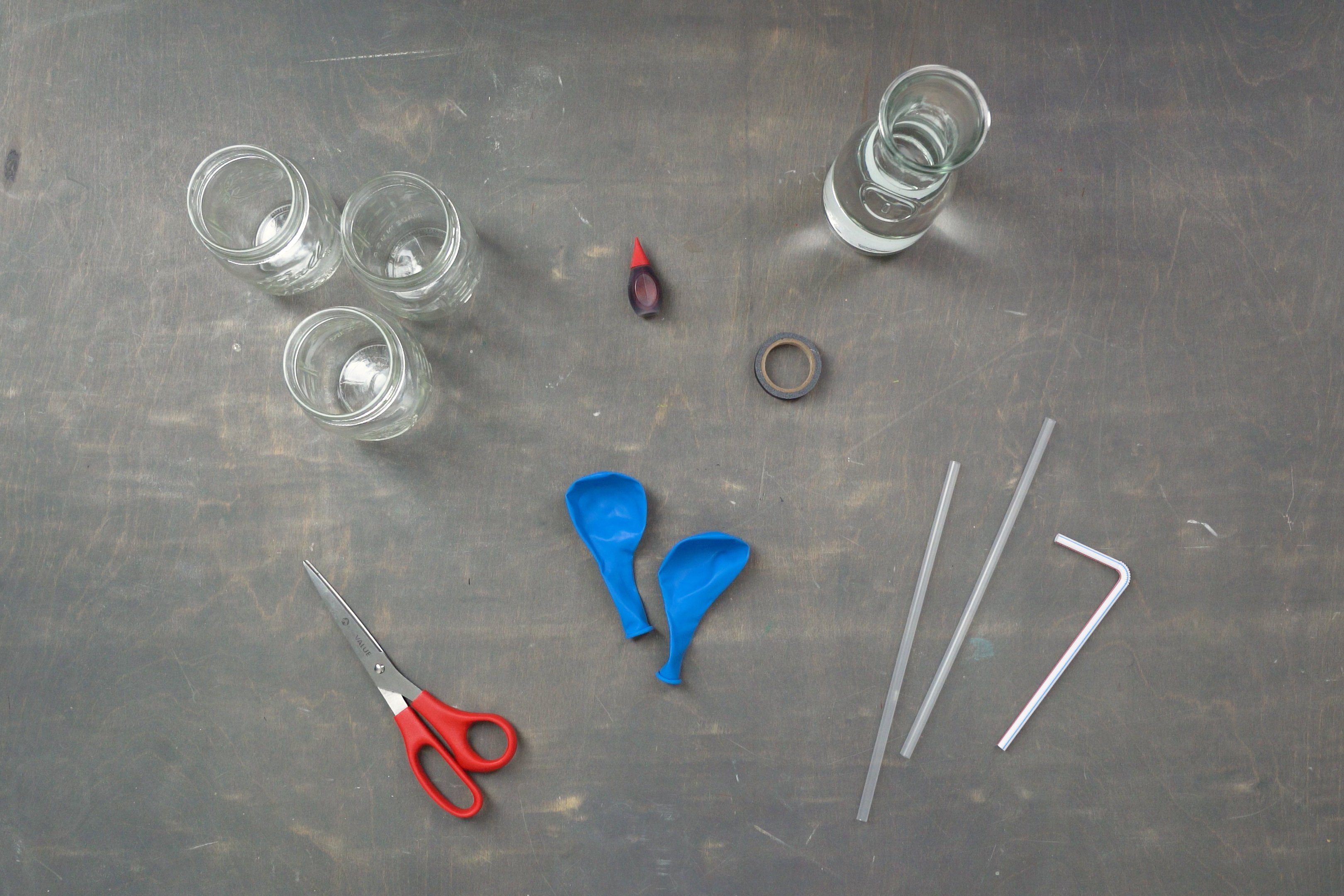
Step 2
Cut the neck off of two balloons. Then, tape the cut end of the balloon neck closed.
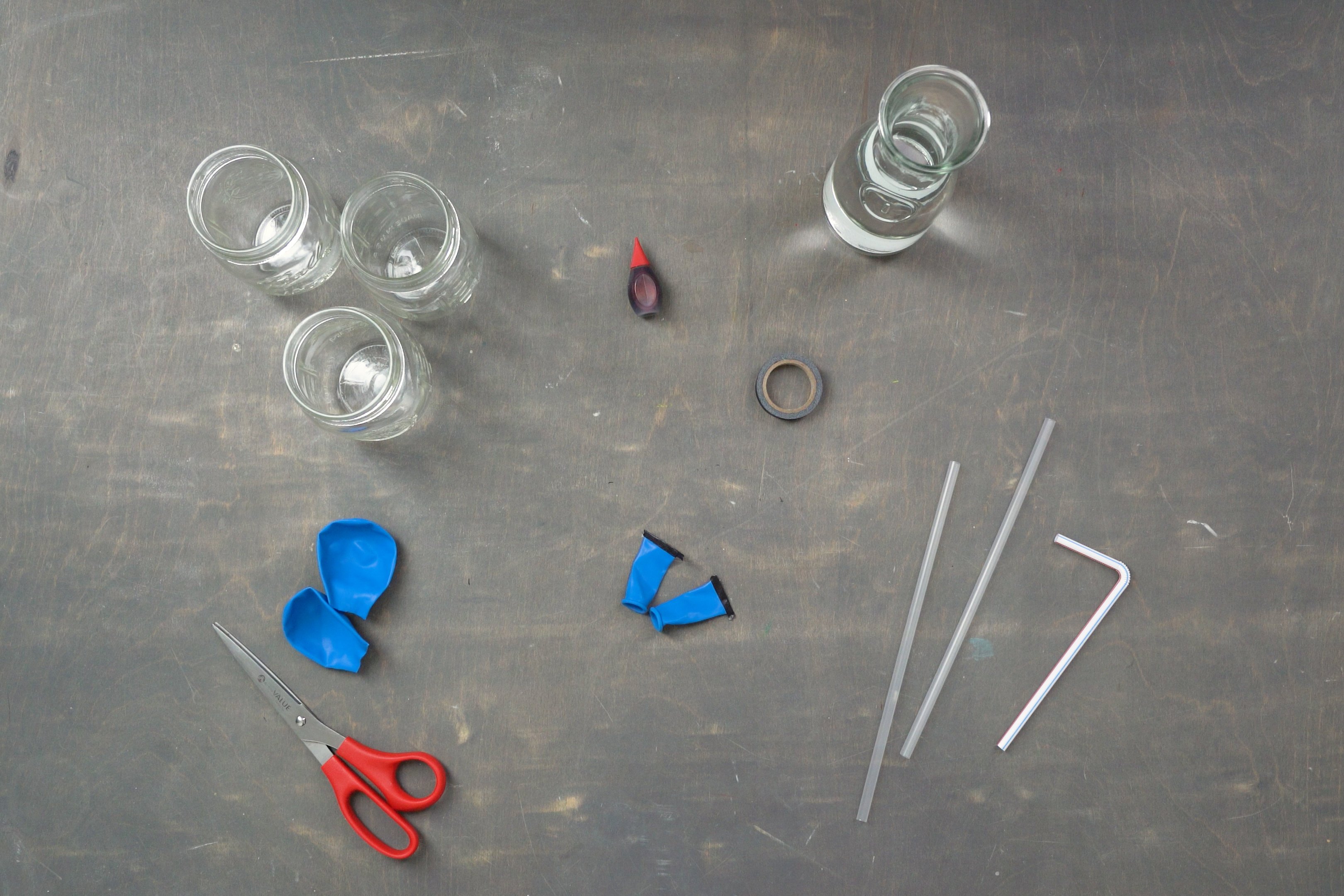
Step 3
Cut a very small slit (enough to insert a straw) in the neck of each balloon about ½ inch below where you taped. Then, insert a clear straw into the slit of one balloon. Set the other balloon aside.

Tip
This should be a very tight fit. You may need an adult to assist you.
Step 4
Cut the bendy straw so that there is about 1 ½ inches on either side of the bend. Then, cut the other clear straw in half.
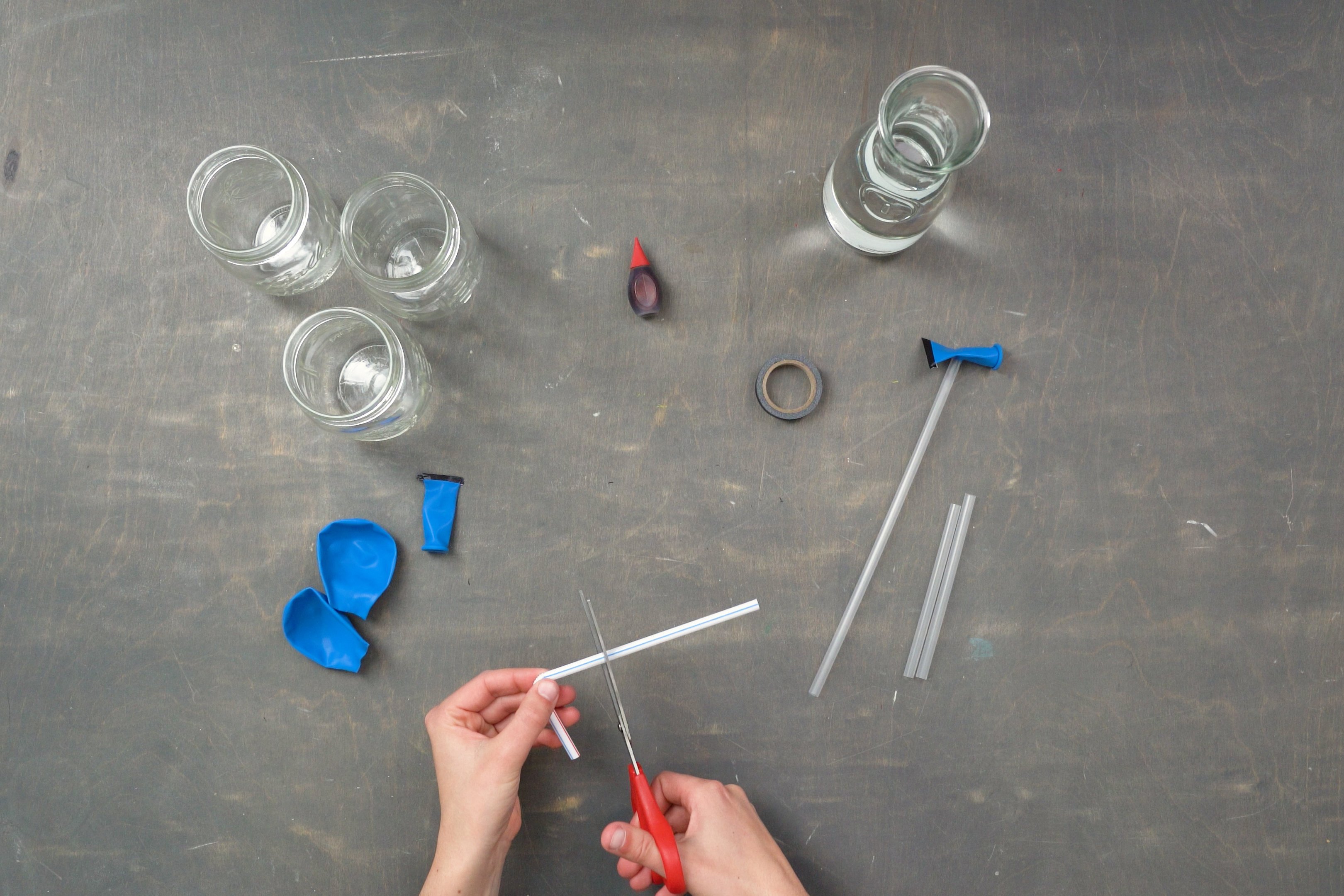
Step 5
Tape the bendy straw in between the two half-length straws.
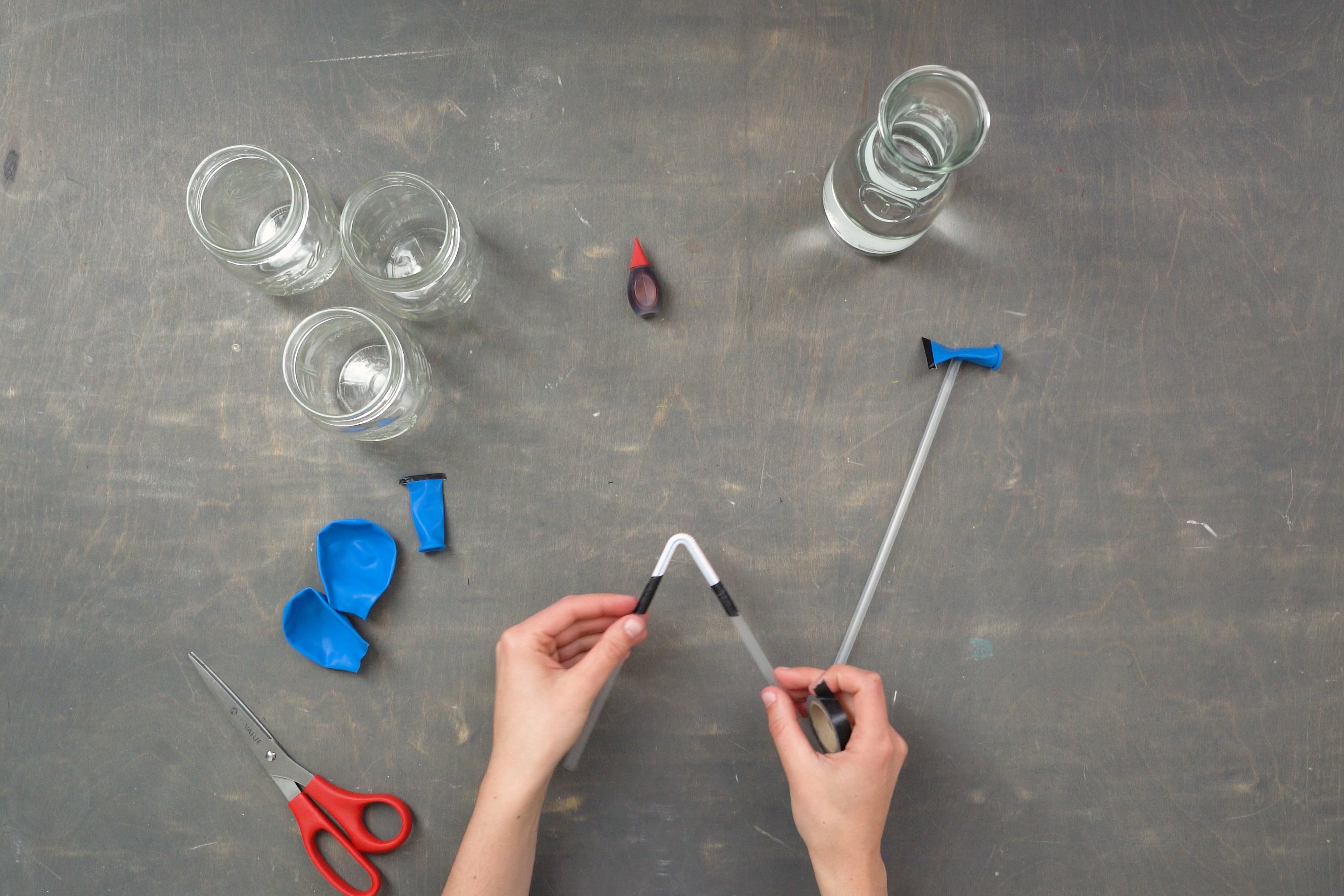
Step 6
Cut two small slits directly across from one another near the top of one of the balloon tops.
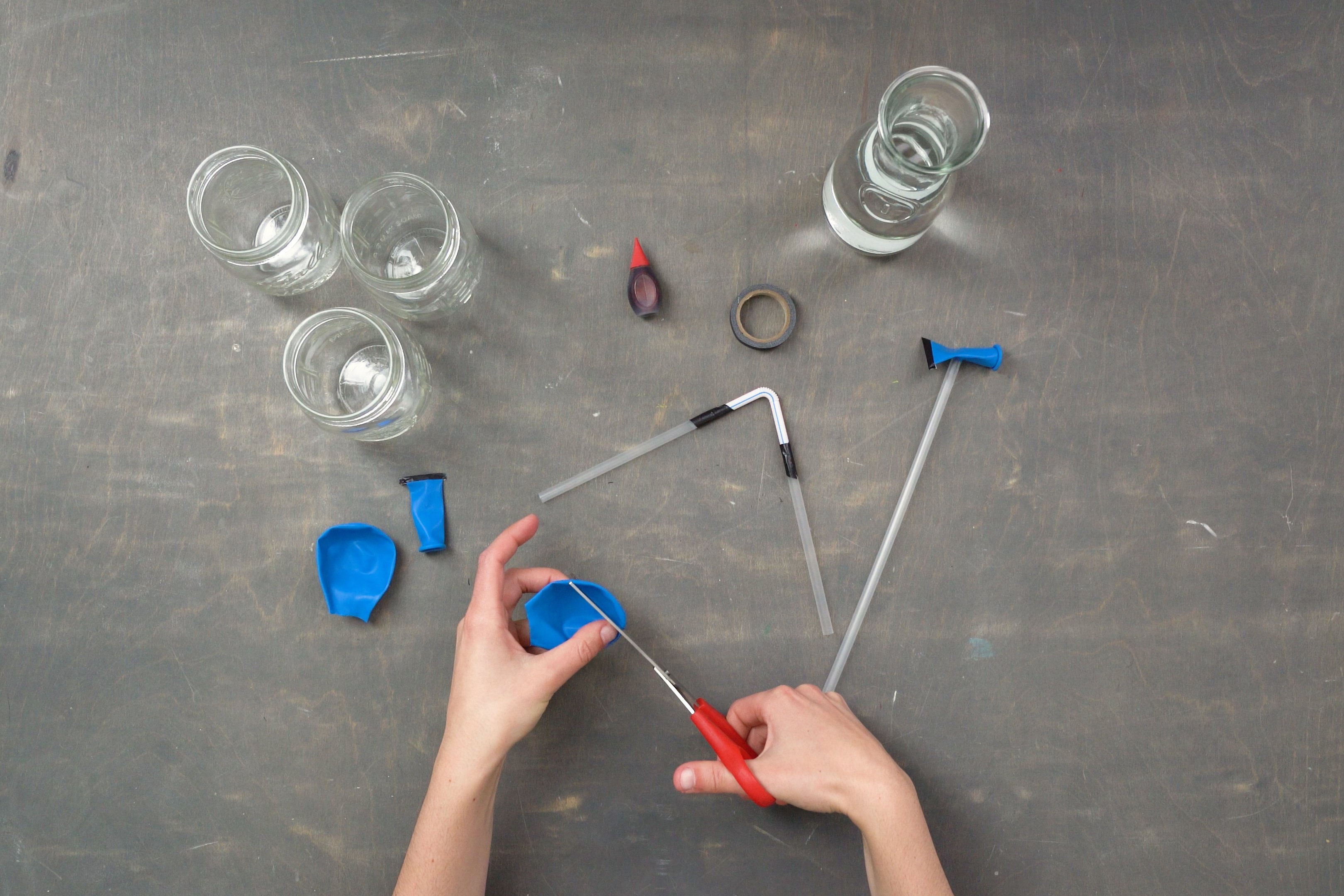
Step 7
Insert the long straw and the bendy straw into the two slits.
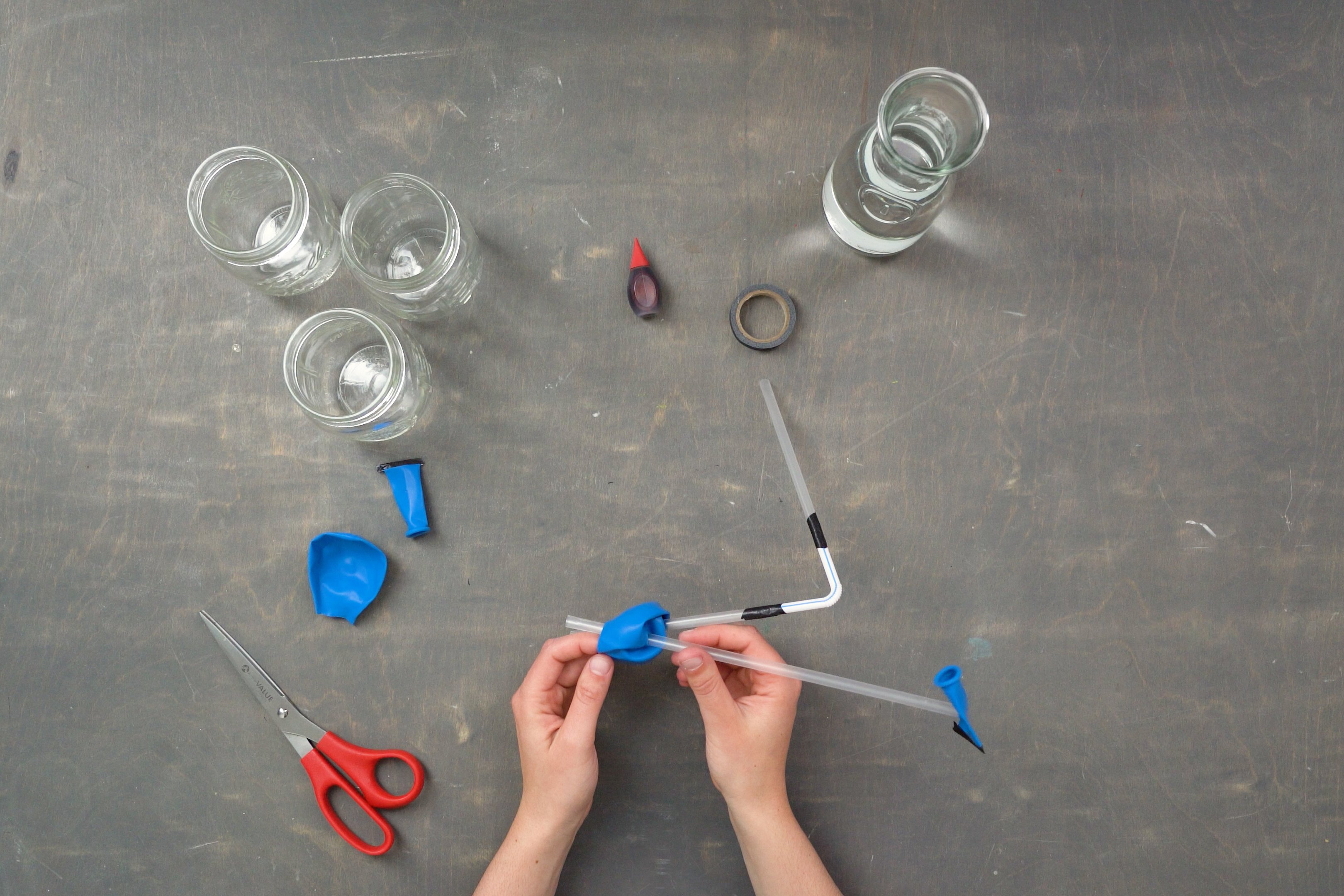
Step 8
Insert one of the half-length straws from the bendy straw into the slit of the balloon neck you set aside in step 4.

Step 9
Stretch the balloon over the top of the small container with both straws inside of it.
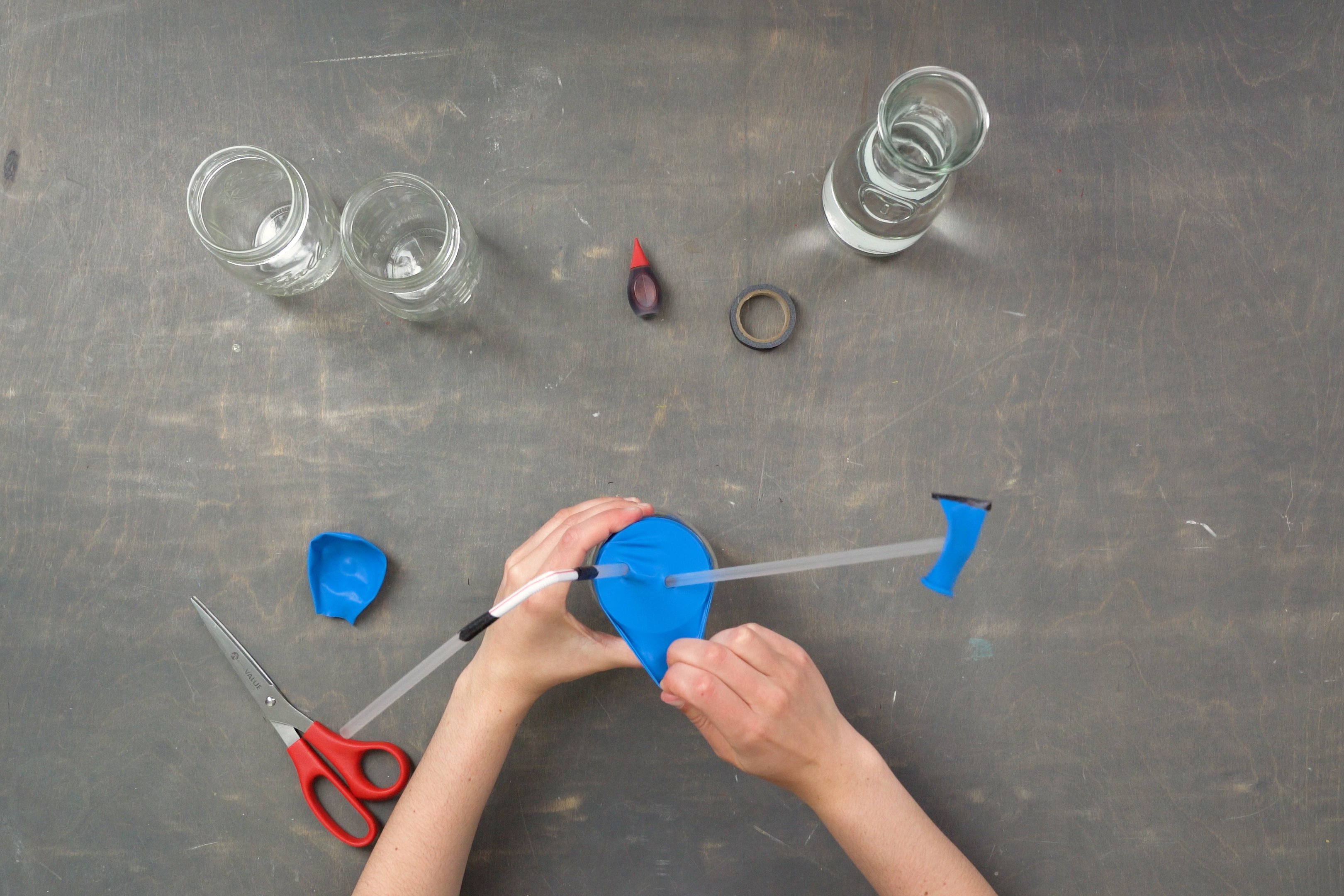
Tip
This balloon should be as tight as possible. You may need an adult to assist you.
Step 10
Fill one of the cups about ¾ full with water. Then, drip about 5 drops of red food coloring into it.
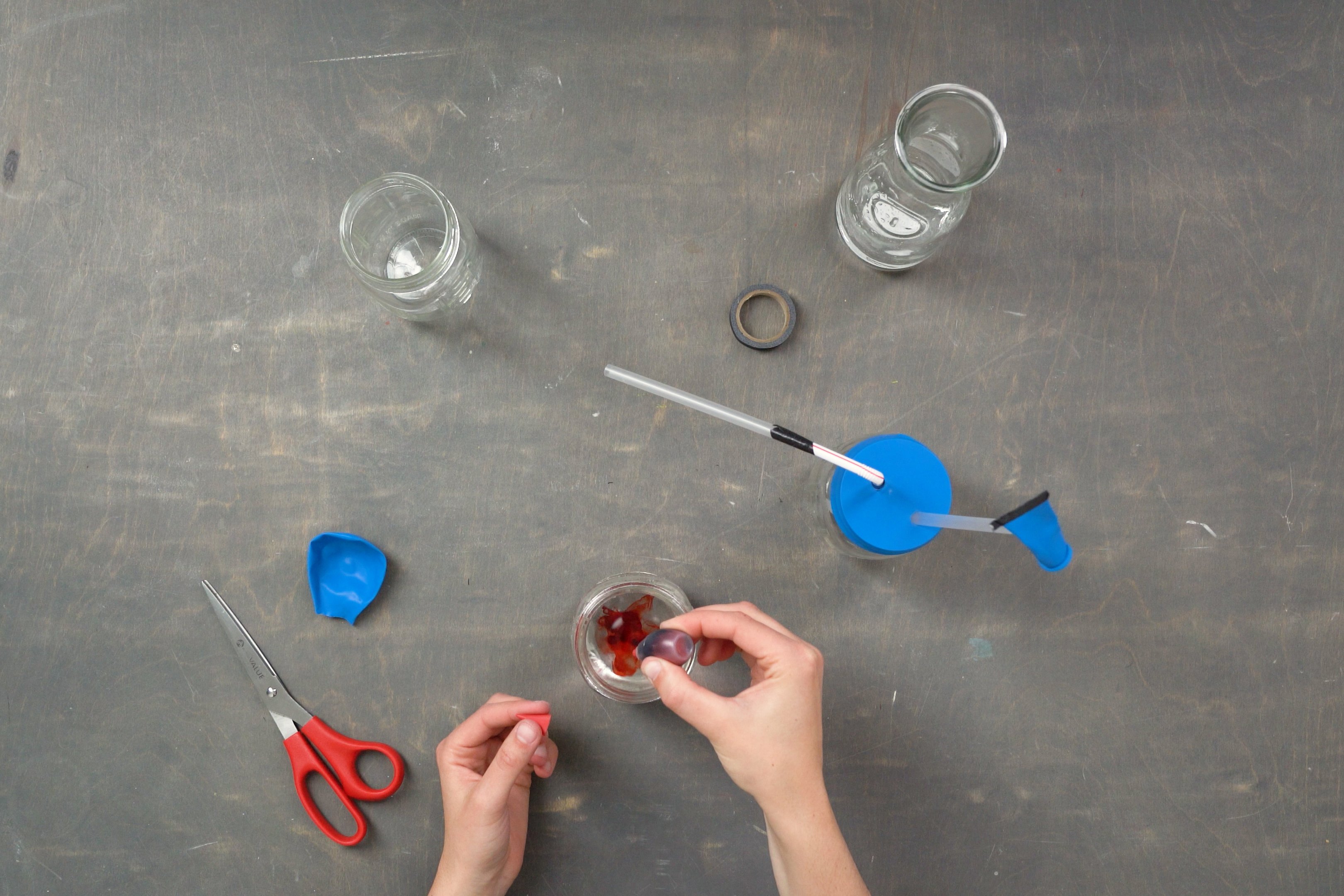
Step 11
Place the cup filled with water on the other end of the bendy straw and the empty cup underneath the other straw. Then, push down on the balloon and watch what happens! This is how the valves in your heart work. This particular model shows the right ventricle “receiving” oxygen-poor blood from the right atrium through the tricuspid valve and pumping it to the body through the pulmonary valve.

Learn more
Do you know what makes the sound of your heart beat? It isn’t the heart muscles contracting (try flexing your biceps and see if that makes the same sound). It’s actually the valves in your heart opening and closing! The first sound from the valve between your atria and ventricles closing. The second sound is from the valve between your ventricles and the rest of your body closing. Doctors think those sounds go “lub-dub, lub-dub.” What do you think a heartbeat sounds like?
